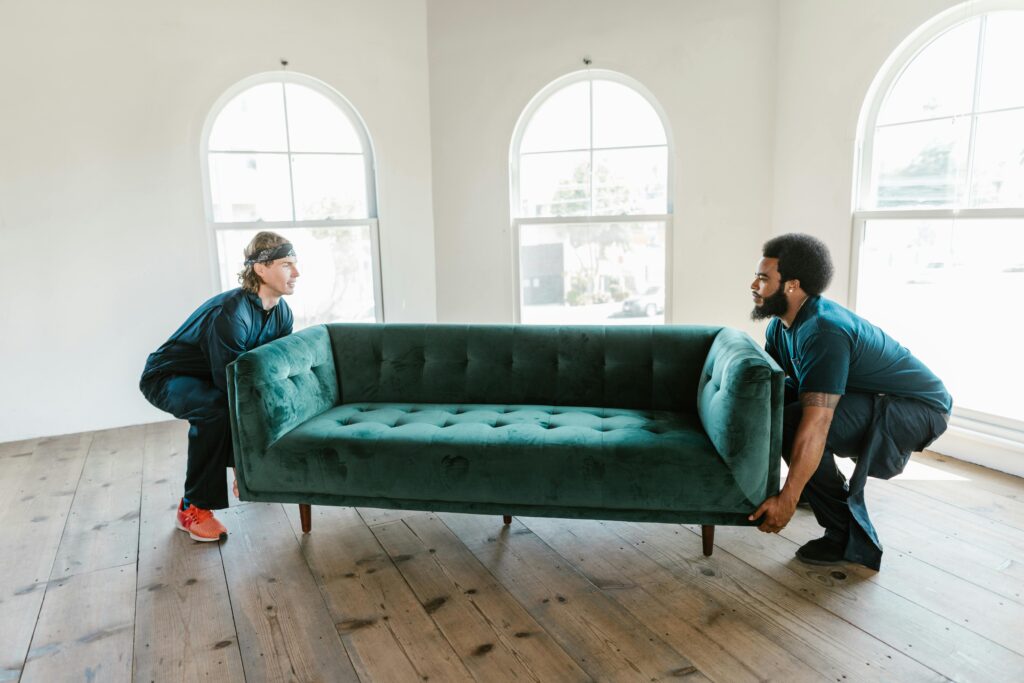Moving to San Mateo: What To Consider When Transporting Furniture in a Coastal Climate

Relocating to San Mateo, with its mild yet humid coastal climate, brings a unique set of challenges that go beyond simple transportation. While the move itself might seem straightforward, the real difficulty lies in protecting your furniture and belongings from the environmental factors that can quickly wear down materials. Whether you are moving from another part of the Bay Area or across California, understanding how the ocean air and temperature variations affect your furniture will help preserve its look and structure for years to come.
Understanding the Coastal Climate of San Mateo
San Mateo’s proximity to the Pacific Ocean makes it a beautiful yet demanding location for homeowners. The constant presence of moisture in the air, combined with occasional fog and salt particles, can accelerate corrosion, rust, and wood warping. While residents enjoy mild weather most of the year, these same climatic conditions can be harsh on furniture, especially during the transition from inland areas to the coast.
Before packing, it’s important to assess which pieces of furniture are most vulnerable. Wooden tables, leather couches, and metal-framed beds all react differently to humidity. Delicate upholstery may absorb moisture, while wood can expand, and metal parts may oxidize if not properly sealed. Therefore, preparing each item according to its material type is the foundation of a successful coastal move.
Planning the Move in Advance
Proper planning prevents unnecessary damage and stress during relocation. Start by creating a comprehensive inventory of all furniture pieces and categorize them by size, material, and fragility. This approach helps estimate the amount of protective materials and packing supplies required.
A sample numbered checklist for effective planning might include:
- Inspect all furniture — note scratches, loose joints, or existing damage.
- Decide which items to move — sell or donate unnecessary pieces.
- Measure large furniture — ensure it fits through doorways and staircases.
- Schedule professional assistance — contact movers at least 3–4 weeks before the move.
- Prepare climate-resistant packaging materials — such as shrink wrap and waterproof covers.
Advance scheduling also ensures that movers arrive prepared with the right tools, climate-controlled vehicles, and experience in handling moves specific to coastal regions.
Why Climate Matters for Furniture
Furniture materials are sensitive to even small shifts in temperature and humidity. Wood, in particular, is porous and absorbs moisture easily, leading to swelling and deformation. Over time, constant exposure to salty air can dull finishes and cause structural instability. Similarly, leather can crack when moisture evaporates too quickly, while fabrics may develop a musty odor.
To minimize these risks, it’s essential to store or transport items in controlled conditions whenever possible. Wrapping wooden furniture in breathable materials prevents moisture buildup while still allowing air circulation. Avoid using plastic directly on wood for extended periods, as trapped humidity may create condensation.
Choosing Professional Assistance
Relocation within the Bay Area often requires specific expertise in managing local weather conditions and terrain. By partnering with movers San Francisco, homeowners can ensure their belongings are handled by teams familiar with coastal logistics. These professionals understand how to balance transport timing, humidity control, and careful handling of delicate furniture.
In addition, professional movers provide durable packing supplies like climate-resistant wraps, cushioned blankets, and reinforced crates for valuable antiques or fragile pieces. Their trucks often come equipped with temperature regulation systems, keeping furniture safe even during longer transits between cities.
Selecting the Right Packing Materials
Choosing the proper materials for a coastal move can make a significant difference in preserving your furniture’s integrity. Basic cardboard boxes are rarely sufficient for long-term moisture exposure, so combining various materials is key.
- Furniture blankets: Protect surfaces from scratches and provide insulation.
- Stretch film: Secures drawers, doors, and detachable parts.
- Silica gel packets: Absorb excess moisture inside wrapped items.
- Bubble wrap: Prevents impact damage to fragile or glass surfaces.
- Waterproof covers: Shield items from condensation and fog during unloading.
When wrapping wooden furniture, always start with a soft fabric layer, then apply bubble wrap or shrink film on top. This creates a breathable buffer that prevents direct moisture contact while maintaining stability.
Disassembly and Labeling Tips
Large furniture items should be disassembled whenever possible before transport. This not only makes them easier to move but also reduces the chance of joint damage. Keep screws, bolts, and connectors in labeled bags taped directly to the furniture piece they belong to.
A clear labeling system accelerates the reassembly process after arrival. For example, using color-coded tape for each room helps movers place boxes and furniture in their correct destinations without confusion. Label each item with details like “fragile,” “this side up,” or “handle with care” to ensure proper handling.
Preventing Damage During Transit
The route from your current location to San Mateo may pass through areas with changing humidity and temperature. Sudden climate shifts during transport can cause condensation inside the truck. That’s why using ventilated or temperature-regulated moving vehicles is ideal.
Furniture should be secured inside the vehicle to prevent movement or collision. Use straps, corner guards, and soft padding between items to minimize friction. Heavy pieces like wardrobes or sofas should be loaded first to create a stable foundation for lighter items.
Storing Furniture After the Move
In some cases, your new home might not be immediately ready to accommodate all your furniture. If storage is necessary, choose a climate-controlled facility that maintains stable temperature and humidity levels. Avoid keeping furniture in garages or non-insulated spaces, as these areas are prone to condensation and mold growth.
Before storing, wipe all surfaces with dry microfiber cloths and apply a protective polish or sealant. Metal elements can be coated with a thin layer of anti-corrosion spray, while leather and fabric should be treated with conditioners to maintain flexibility and color.
The Role of Local Experience
Working with professionals who know the area well makes a huge difference. Local specialists like Bay Area San Mateo movers https://got2move.com/local/san-francisco-bay-area/san-mateo/ have firsthand knowledge of the city’s weather, traffic, and coastal conditions. Their familiarity with local routes helps avoid time delays and exposure to harsh outdoor elements.
They can also recommend the best days and hours to move, reducing risks associated with morning fog or afternoon humidity spikes. These nuances are often overlooked by non-local movers, but they are vital for ensuring that furniture arrives intact.
Reducing Environmental Impact
Coastal moves often inspire homeowners to adopt eco-friendly practices. Using recyclable packing materials, reusing boxes, or renting reusable plastic crates reduces waste. You can also source biodegradable wraps and paper alternatives that offer effective protection without adding to landfill.
Additionally, consider donating or repurposing furniture that won’t suit the humid environment of San Mateo. Some hardwood pieces may warp over time, while metal frames can corrode faster near the ocean. It’s better to replace vulnerable items with materials like teak or aluminum, which resist salt and moisture naturally.
Common Mistakes During Coastal Moves
Many people underestimate how different a coastal move can be from an inland one. The most common mistake is assuming standard packing methods are sufficient. Neglecting to account for moisture often results in swollen drawers, peeling veneers, or rusted hinges.
Another error is using non-breathable plastic coverings on wood for too long, which traps condensation. Additionally, failing to inspect furniture upon arrival can allow small amounts of moisture damage to worsen over time. Taking photographs before and after transport helps document the condition of each item and simplifies insurance claims if necessary.
Practical Tips for Long-Term Maintenance
Once your furniture is safely inside your new home, regular maintenance becomes key. Wipe down surfaces weekly to remove salt residue carried by the air. Apply protective wax to wooden surfaces every few months, and check for early signs of corrosion or discoloration.
Keep windows slightly open when weather permits to improve air circulation and reduce humidity indoors. Dehumidifiers are an excellent investment, especially for ground-floor apartments or houses near the water. Maintaining balanced indoor conditions will significantly prolong the life of your furniture and keep it looking its best.
Organizing the Move Efficiently
A successful relocation requires clear structure and coordination. Begin preparations at least a month in advance, and pack non-essential items first. Use a room-by-room strategy to avoid confusion. Create a packing schedule and stick to it, leaving the most used rooms for last.
Plan loading and unloading around weather conditions—avoid early mornings when fog is dense or evenings when moisture levels rise. Communicating regularly with your moving team ensures that everyone stays on the same page regarding timing, routes, and special handling instructions.
By following these strategies, your move to San Mateo can be as smooth and stress-free as possible. With the right packing materials, professional help, and climate-conscious planning, your furniture will withstand the coastal air and remain in pristine condition for years to come.
→ Find related stories and features here.














